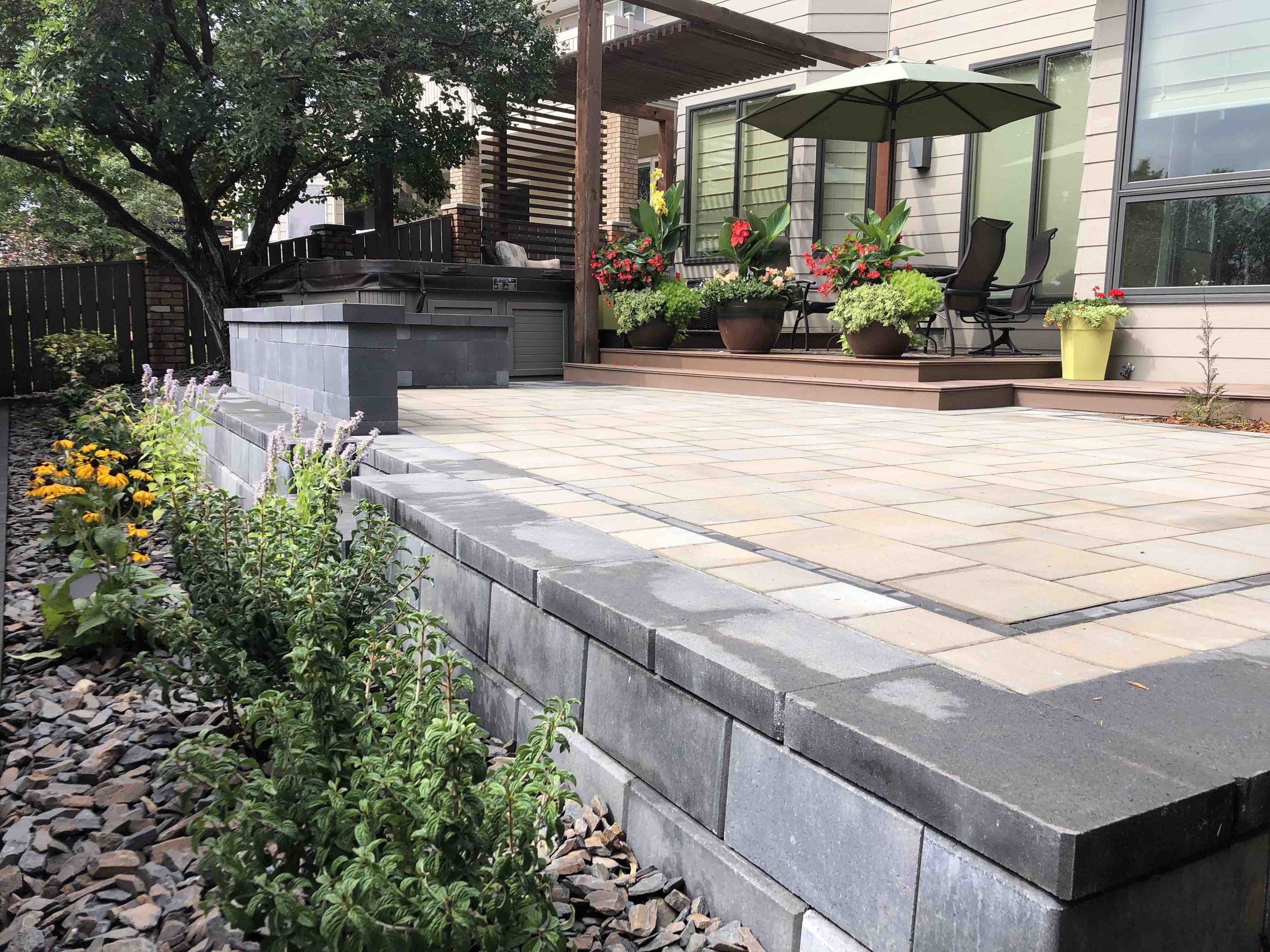Should You Build a Patio or Deck?
/Although “deck” and “patio” get used interchangeably, learn what makes them different to decide which is best for you. Weigh the pros and cons of decks and patios, from installation cost and style considerations to functionality and zoning factors
ABOUT DECKS
Regardless of their height from the ground, decks are suspended structures supported by posts or pillars. Most often, decks are framed with wood and covered with decking material, usually wood, composite, vinyl, or even porcelain tiles.
ABOUT PATIOS
As they are generally low to the ground, patios always have a solid foundation. Most often, patios are built with poured concrete or paving stone, although some feature gravel, porcelain tiles and/or natural stone.
DECK & PATIO COST COMPARISON
When comparing the cost of constructing a deck or patio, decks usually come at a higher initial cost than patio, since building a deck is often more complex.
Construction & material costs
Because a deck is suspended, construction is more time-consuming. You’ll also often require a building permit to build a deck, as you would for any structure more than two feet above grade.
Material costs for both patios and decks vary considerably. The price difference depends on your materials of choice. When considering their life-spans, though, patios are generally more economical than decks. Patio longevity is due to durable building materials and construction techniques.
Maintenance costs
Patios are often easier to maintain their component parts are longer-lasting than most decking materials. Chances are, a patio is made some type of concrete product, either poured or paving stone. Unlike wood, concrete patios last many years without rotting and don’t require regular painting, staining or waterproofing. This said, weeds may be an issue decks don’t offer, which is a deciding factor for some.
Zoning & bylaw factors
Since a deck is often more than two feet above ground, municipal bylaws govern placement. In Lethbridge, for example, a deck must be at least four feet away from side property lines and accessory buildings, and 16.5 feet away from rear property lines. These rules don’t apply to patios within two feet above grade.
Designing for functionality
Another consideration regarding aesthetics and functionality, especially for a deck three-to-four feet above ground, is the space beneath. Typically, off-ground decks are not high enough to walk under, and space becomes an eyesore, collecting blown-in dirt, weeds and garbage. Without skirting around a raised deck, (an additional cost), spaces beneath them often become a den for lost pets and urban wildlife, like rabbits, raccoons, skunks, badgers, porcupines, sometimes snakes.
Yard style & aesthetics
In terms of design, patios can be much more interesting than most decks since the materials used to construct them often have the ability to easily make curves and interesting shapes, allowing them to fit seamlessly into virtually any landscape. Decks, on the other hand, are most often constructed from rigid materials that are less pliable limiting their design possibilities.
WHY NOT BOTH?
Each has its strengths, so decks and patios have a place in most landscape designs. But, for durability, easy maintenance, privacy, shelter from southern Alberta winds and beauty, install a patio and ditch the deck!
DECK VS PATIO: DESIGN COMPARISON
When it comes to aesthetics and functionality in your landscape, both decks and patios have positives and negatives associated with them depending on the landscape setting.
Slope, suspension & shelter considerations
Patios have limitations, depending in particular on the grade of your outdoor space. Generally speaking, patios require level ground for building on, whereas decks can be suspended over virtually any topography, flat or hilly. However, by including retaining walls to build tiers or terraces, patios can be placed on slopes, but often at a much higher cost.
Obviously, a patio will not work to create a living space off of a second storey or above ground, where a deck is your only option. And, a deck is often your best choice to enjoy surrounding views. But, in most new neighbourhoods, perching your outdoor living space above fencelines and immature trees and shrubs is akin standing onstage for the world to see!
The nice thing about a patio, especially in many new yards, is they can be nestled out of nosey-neighbours’ sightlines and offer shelter from wind at the same time.












